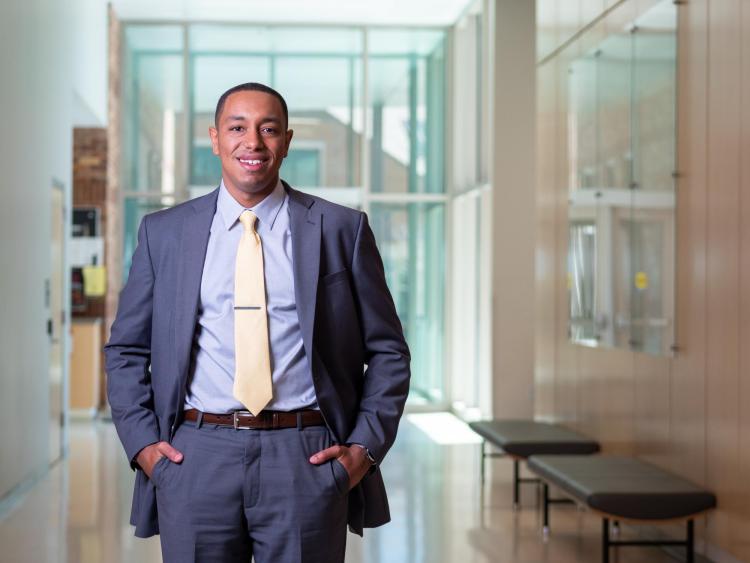
Hisham Ali
The sounds of construction permeate the Aerospace Engineering Sciences Building at the University of Colorado Boulder. The bang of hammers. The wail of electric saws. A new laboratory for a plasma wind tunnel is taking shape.
The project is the vision of Assistant Professor Hisham Ali. It will allow his team to study the conditions of atmospheric reentry, when a spacecraft returning to Earth can hit speeds of Mach 30 and experience temperatures in excess of 10,000 degrees Kelvin (17,540 degrees Fahrenheit).
The aerospace building is still new, having only been completed in 2019, but the research Ali hopes to conduct has special requirements that necessitate renovations. It has taken more than a year of preparation just to begin the construction.
"We're building a novel system. It's not a turnkey purchase, and determining all the requirements was challenging," Ali said. "What do we need for this work? What equipment is necessary - vacuum pumps are required, but what models meet our performance needs? Then the specs go to an architect so they can do layout with an electrical engineer. Then we worked with a mechanical engineering contractor to determine how much extra cooling we need in the room. It's very involved."
Electricity is a particular demand. A major component of the project is a high-power radio frequency (RF) generator that can draw over 100 kilowatts during operation. That comes on top of three 30-kilowatt vacuum pumps and an air compressor and chilled water pump that utilize over 25 kilowatts. All of these items use more power on their own than the average U.S. household consumes at any time.
"What we're doing here at CU Boulder is studying this high-temperature hypersonic plasma environment. To study how we interact with this plasma electromagnetically, we have to simulate these extreme conditions in our laboratory," Ali said.
In addition to moving walls and adding new conduit and cooling lines, the construction crew must also reinforce the floor in the lab to accommodate a mezzanine structure that will hold more than 20,000 pounds of equipment.
Ali joined the aerospace faculty at CU Boulder in 2022. Since then, design for the laboratory has been his major focus. He is excited at the possibilities the lab present both for advancing science and as a teaching environment.
"Construction of this inside an academic building means we can integrate really well with the educational program, with student work and classes," Ali said. "One of the advantages of an RF plasma facility is you can run the plasma jet for hours in a continuous fashion. We plan to do experiments as often as possible."
Construction began on July 17. It should take a little more than six months to complete.






